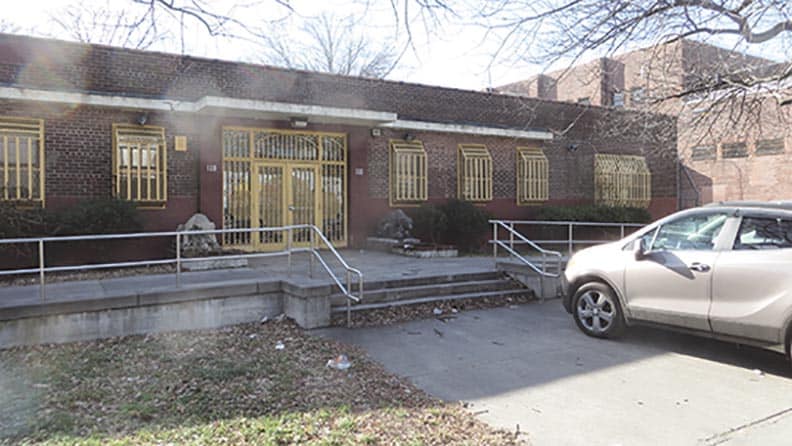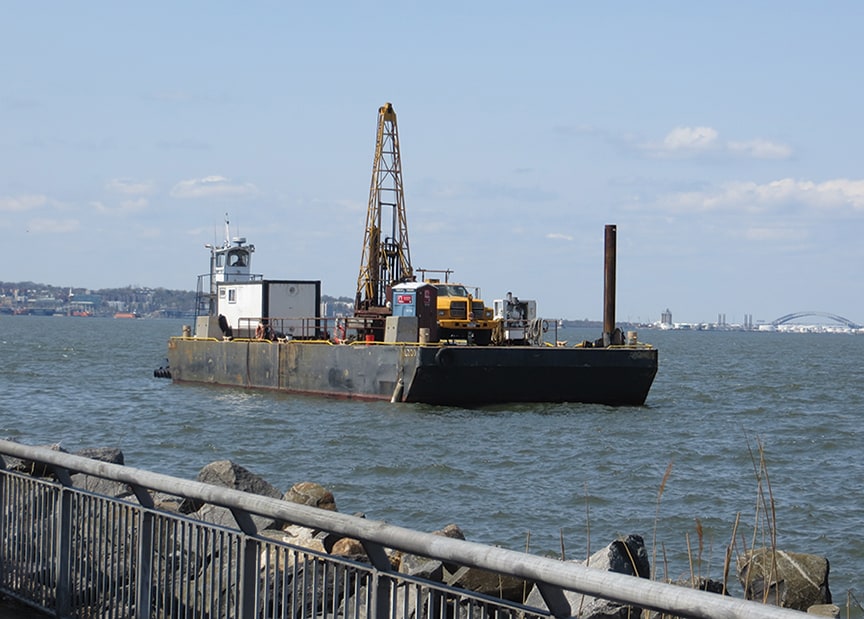De Blasio’s Connector
Mayor de Blasio began the next phase of his reelection campaign last month. Amidst great fanfare, he introduced the Brooklyn-Queens Connector.
Back in 2006, Congresswoman Nydia Velazquez allocated $300,000 of federal monies for a feasibility study for a smaller version of it that would connect Red Hook with Jay Street, Borough Hall.
The result of that study, requested by the Brooklyn Chamber of Commerce at the urging of local trolley enthusiast Bob Diamond, was negative. It would cost at least $129 million, make Van Brunt Street even more congested, and probably cause outrage among motorists losing even more parking spaces.
The consultants who did the study, however, had a grand old time traversing the country to look at other trolleys. I spoke to one of them, who told me that he himself was a trolley enthusiast and that he loved the assignment.
A much less expensive transportation study was done a few years later done by a capable duo dispatched to the community from the NYC Department of City Planning. They came up with a report suggesting improvements to local streets, a fanciful rendering of a pedestrian mall under the Gowanus Expressway, commuter ferry service and other improvements including to the pedestrian bridge that’s near the tunnel.
The mayor’s idea, which is actually a plan developed on behalf of some of New York’s biggest real estate companies and also the Red Hook Initiative, would cost $2.5 billion. As reported in a number of places, this money would be raised by a city bond issue, to be paid back over 30 years with the additional property taxes that the city expects to receive from the increased property values that a trolley would be expected to bring.
It was reported that the planners also considered a new city bus route to accomplish the same transportation goal. This was estimated at costing $1 billion. That option was rejected on the basis that a bus would not increase property values – hence no possible way to pay back the bonds except using the general tax rolls.
The real estate developers funding the study included Two Trees as well as Durst – both are companies with plans for luxury condo development along the waterfront. One could imagine that an East River coastline dotted with luxury condos from Astoria to Red Hook might be on the minds of the real estate community.
De Blasio came to Pioneer Works for his big press announcement. Flanking the mayor was Lillie Marshall and Frances Brown of the Red Hook Houses, Jill Eisenberg of RHI and Michelle de la Uz. De la Uz is the Executive Director of the Fifth Avenue Committee, an affordable housing development corporation, once headed by Brad Lander. There were others there, including the president of Brooklyn’s Chamber of Commerce, Nydia Velazquez and Carlos Menchaca. De Blasio emphasized that 40,000 public housing tenants live in developments close to the proposed route, offering the underserved an easier way to get to work.
De Blasio and Governor Cuomo have had much trouble working together, for whatever reason, and this plan was specifically created to avoid the need for any state approvals. That means that any connection with the subways would require a double fare, as it’s hard to believe that the governor would ever allow MTA’s necessary cooperation.
Borough President Eric Adams, commenting on the plan, said the “the devil is in the details.”
One can imagine ads for the re-election of the mayor, possibly paid for by the Real Estate Board of NY, flashing the slick artist renderings of the Connector. It’s hard to imagine much more coming out of this dubious plan.
Senior Center
Before leaving office in 2013, Councilmember Sara Gonzalez made sure to designate $1.8 million from her budget for a new Red Hook Senior Center. It was to replace the existing center, damaged beyond repair (we are told) by the waters of Hurricane Sandy.

The year 2014 went by without evidence of any work being done. Pressured by the Red Hook tenant leaders, Councilmember Carlos Menchaca forced NYCHA to confront the situation at a special meeting before lunchtime at the temporary center – the basement of the Miccio Center.
It was said then that the year had been spent devising plans for the renovation of the building next door, formerly home of a Red Hook Head Start program. The plans were distributed and the renovation promised to be complete by Christmas 2015.
Much of 2015 passed with still no indication of work happening. Seniors were getting edgy. More meetings were held, and, at one NYCHA told us that no contractor was willing to work for such a low sum – the low bid coming in at over $4 million.
Michael Rosen, NYCHA’s new VP for Disaster Recovery, appeared at a subsequent meeting announcing that NYCHA would work around this problem by using some of their own contractors as well as tapping into some FEMA money. The new date for reopening was said to be as early as April 15 this year.
Well, that’s not working either. According to NYCHA, they just discovered that the roof needs work, causing yet more delays. They just figured this out now, while they claim to have spent a year planning it all out. An August grand opening is now planned.
NYCHA is the recipient of over $400 million of federal money to make the Houses more resilient. A wonderful plan was presented, as reported elsewhere in this issue. If NYCHA wants us to believe that they can handle this large project, they should do better with this much smaller one.
Ferry Fiasco
A recent Community Board 6 (CB6) meeting held at the Miccio, the Economic Development Corporation (EDC) presented Red Hook with an updated Red Hook commuter ferry plan. Despite the overwhelming opposition of local residents to their original idea of placing the ferry stop at the end of the windy pier extending from Van Brunt Street, they are still considering it.

At a CB6 meeting last summer we were told that there was absolutely no way they could possibly locate a stop at the much more accessible location at the Atlantic Basin, next to the Cruise Terminal.
They now say that are considering that as well, and will let us know in April what they will decide.
They also added the IKEA pier as another site to study.
While some consider this a victory – to us it is fraught with uncertainty, especially knowing that EDC takes great joy in dictating policy when it comes to economic development. They can do this because they are set up that way. EDC is an agency created to make it easier for private companies to deal with the use of city-owned properties and can make quick decisions without having much government oversight. They also are a for-profit entity, which leads one to suspect that they have bigger plans for Atlantic Basin than we know about.
We hope they will do the right thing for Red Hook, which if they did would set a new precedent.
UPDATE – while they still haven’t announced where the Red Hook station will be, EDC’s mistakes seems to have cost us the Water Taxi service that has connected IKEA and Fairway with lower Manhattan, bringing thousands of tourists and shoppers to the neighborhood. For whatever reasons, it leaked out that EDC had picked a west-coast based ferry company to provide the expanded commuter ferry service that deBlasio demanded to begin in time for his 2017 re-election campaign.
The Durst real estate company, one of the funders for the big trolley study, and owners of the local Water Taxi, was outraged at this and announced they would shut down the ferry after the summer. EDC responded weakly that the leak wasn’t true, but the Mayor’s office the next day said indeed it was true. So EDC is left with egg on its face, and their incompetence has screwed Red Hook once again.








